
Cassiterite Gemstone: Nneɛma, Nkyerɛase, Botae & Nea Ɛkeka Ho
 Cassiterite yɛ ade a ɛhyerɛn a wɔde di dwuma de nya tin mfe mpempem pii. Ɛyɛ aboɔden abo nso a ɛwɔ apete a ɛyɛ nwonwa (kɔla ahorow a ɛhyerɛn) a ɛde nsa bɔ diamond de no .
Cassiterite yɛ ade a ɛhyerɛn a wɔde di dwuma de nya tin mfe mpempem pii. Ɛyɛ aboɔden abo nso a ɛwɔ apete a ɛyɛ nwonwa (kɔla ahorow a ɛhyerɛn) a ɛde nsa bɔ diamond de no .
So cassiterite ho yɛ na anaasɛ ɛtaa ba? Sɛ́ aboɔden abo no, cassiterite abu so na wohu wɔ wiase nyinaa. Nanso, ahwehwɛ a ɛte sɛ aboɔden abo a ɛwɔ anim no ho yɛ na koraa na mpɛn pii no ɛyɛ nketenkete.
Wɔ mfiridwuma ne aboɔden abo nyinaa mu no, cassiterite wɔ su ahorow a mfaso wɔ so a ɛma ɛyɛ anigye a wɔmfa nyɛ hwee, titiriw ma wɔn a wɔboaboa nneɛma ano. Saa akwankyerɛ yi bɛkyerɛ wo biribiara a ɛsɛ sɛ wuhu fa cassiterite agude, aboɔden abo, sɛnea wɔde di dwuma, ne ne bo ho!
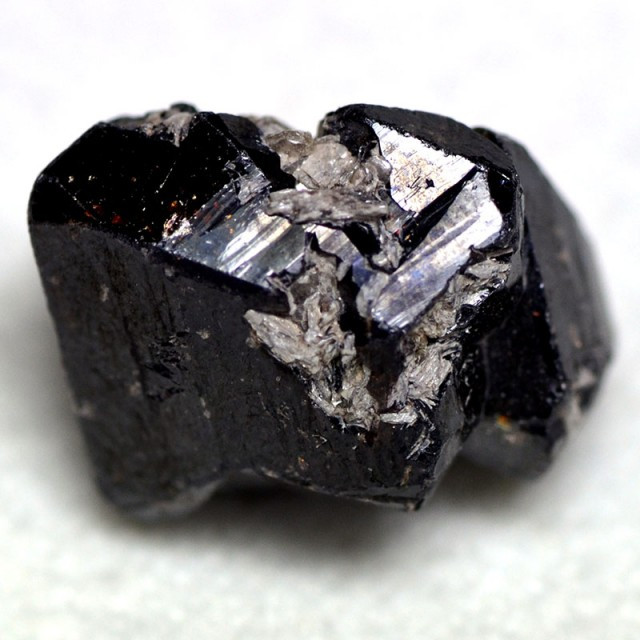
Ɛfa Cassiterite Ɔbo ho
Cassiterite yɛ aboɔden abo a ɛsom bo fã bi , ɛwom sɛ ɛkame ayɛ sɛ ne pete (ogya) no boro aboɔden abo a ɛsom bo daimond no mmɔho abien de. Ɛyɛ zodiac ɔbo ma Sagittarius na ɛbata 2 ne 8 ho wɔ akontaahyɛde mu.
Abodin a wɔtaa de frɛ cassiterite ne tinstone, nanso din afoforo bi ne:
Tin spar a wɔde yɛ nneɛma
Ruby tin a wɔde yɛ nneɛma
Nadelzinners (Frisia kasa mu asɛmfua a ɛkyerɛ “tin ore” anaa “crystal tin”) .
Needle-tin a wɔde yɛ nneɛma
Tin a wotumi twitwa mu
Stannum caliciforme (Latin kasa mu asɛmfua a ɛkyerɛ “tin a ɛte sɛ kuruwa”) .
Dɛn ne mfaso a ɛwɔ cassiterite so sen aboɔden abo? Sɛnea ebia woasusuw ho afi edin ahorow a ɛwɔ atifi hɔ no mu no, cassiterite a wɔde di dwuma titiriw no fa tin ho.
Wɔ abakɔsɛm nyinaa mu ne nnɛ, cassiterite ne tin dade fibea a edi kan. Adɛn? Wiɛ, aboɔden abo no yɛ tin ɔha biara mu nkyem 78.6!
Ɛhe na saa cassiterite tin no nyinaa kɔ? Tin a wɔde di dwuma kɛse wɔ wiase nyinaa ne ɛlɛtrɔnik mfiri — a telefon a wokura kyin ka ho — baabi a tin ye ma soldering wɔ circuit boards so. Ne nwene a ɛba fam no ma bonding a ɛka ho wɔ soldering mu no yɛ mmerɛw kɛse.
Nneɛma afoforo a wɔde di dwuma ma tin a woyi fi cassiterite mu ne nsukorade ne powder a wɔde yɛ polishing.

Cassiterite Nkyerɛkyerɛmu & Su ahorow
Sɛ́ tin oxide mineral no, cassiterite no nsusuwii ne SnO2. Tantalum, dade, ne niobium ne efĩ a ɛtaa ba. Ebia wubehu efĩ a ɛwɔ:
Zinc a wɔfrɛ no Zinc
Manganese a ɛyɛ fɛ
Tungsten a wɔde yɛ nneɛma
Germanium a ɛwɔ hɔ
Scandium a wɔfrɛ no Scandium
Indium a wɔde di dwuma
Gallium a wɔfrɛ no Gallium
Cassiterite wɔ rutile mineral kuw no mu. Ebia wubehu rutile afi quartz ɔbo fɛfɛ a wɔayɛ no rutilated no mu, baabi a ɛhyɛn quartz mu sɛ sika kɔkɔɔ a ɛte sɛ ade a wɔde ka ho. Rutile yɛ mineral a ɛtaa ba wɔ kuw no mu na ɛka cassiterite ho sɛ dadeɛ fibea a ɛho hia — wɔ rutile fam no, ɛyɛ titanium dioxide mineral ne titanium ore a ɛho hia.
Ade biako a ɛsom bo wɔ cassiterite ho wɔ wɔn a wɔboaboa ano no mu ne sɛnea ɛyɛ ahwehwɛ su ahorow. Ɛne ahwehwɛ a ɛyɛ mmanoma a wɔntaa nhu te sɛ elbow twins (a wɔabɔ no digrii 60), penetration twins (a wɔanyin atwa wɔn ho wɔn ho ho), ne contact twins (a wɔaka abom wɔ ase) na ɛyɛ.
Wɔdɔ saa tin ɔbo yi nso esiane ne ahwehwɛ su afoforo te sɛ pyramidal anaa bipyramidal, reniform (a ɛte sɛ asaabo) a nhama a ɛhyerɛn fi adi, ne botryoidal (ɛte sɛ bobe akuwakuw).
Sɛ ɛba identification so a...

Wobɛyɛ Dɛn Ahu Sɛ Ɔbo Yɛ Cassiterite?
Nea ɛyɛ mmerɛw sɛ wobehu ne cassiterite no density, anaasɛ tumi pɔtee a ɛtwe ade ba fam. Cassiterite yɛ den yiye wɔ 6.7-7.1, na ɛma emu yɛ duru sen abo afoforo a ne kɛse te saa ara wɔ ne kɛse mu.
Nneɛma afoforo bi a ɛma ɛda nsow ne:
Refractive Index : Sɛ wode refractometer redi dwuma a, cassiterite refractive index no “bɛboro adwinnade no anohyeto so.”
Kɔla a Wɔkyekyɛ : Nea ɛnte sɛ aboɔden abo a ɛte saa ara no, ebia cassiterite wɔ kɔla mmeae ahorow.
Luster : Faceted cassiterite aboɔden abo taa yɛ adamantine (te sɛ daimond), a ɛyɛ hann a ɛntaa nsi wɔ aboɔden abo dodow no ara ho.
Bere a diamond wɔ hyerɛn a ɛte saa ara no, ɛyɛ den kɛse (wɔ 10 wɔ Mohs hardness scale so) sen cassiterite. Nanso, cassiterite a ɛpete wɔ 0.071 no boro diamond de a ɛwɔ 0.044 no so kɛse.
Sphalerite nso wɔ hyerɛn ne kɔla a ɛte saa ara, nanso ne pete no korɔn (wɔ 0.156) bere a ne den (3.5-4) ne ne density (3.9-4.1) sua.
Abo foforo a ɛte saa ara a ɛpete kɛse, a ɛyɛ den kɛse ne cinnabar ne stibiotantalite , nanso abo abien no nyinaa yɛ mmerɛw na ɛyɛ den sen cassiterite.
mineral data a ɛfa cassiterite ho ni:
Mohs denden : 6-7
Kɔla : Tuntum, bruu, kɔkɔɔ, fitaa, kɔkɔɔ, ahabammono, fitaa, enni kɔla, kɔkɔɔ, kɔkɔɔ-biribiri, bobesa kɔkɔɔ, kɔkɔɔ-biribiri
Ahwehwɛ nhyehyɛe : Tetragonal
Luster : Adamantine, vitreous (ahwehwɛ), nea ɛwɔ dade ase; Ɛtɔ mmere bi a, ɛyɛ srade wɔ mmeae a abubu
Transparency : Ɛyɛ nea ɛda adi pefee kosi nea ɛnyɛ nea ɛda adi pefee; Mpɛn pii no, ahwehwɛ a ɛyɛ tratraa a ɛnyɛ hann na ɛyɛ hann
Nneɛma a ɛma nneɛma yɛ mmerɛw : 2.006-2.101
Nnipa dodow : 6.98 - 7.01
Cleavage : Ɛnyɛ pɛ wɔ [100] so, ɛnyɛ nea ɛda adi pefee wɔ [110] so.
Fracture : Ɛnyɛ daa/Ɛnyɛ pɛpɛɛpɛ anaasɛ ɛyɛ subconchoidal
Streak : Ɛyɛ fitaa kosi bruu
Luminescence : Ɛntaa mma sɛ ɛyɛ fluorescent - ɛyɛ kɔkɔɔ wɔ SW-UV mu
Nsonsonoe abien : 0.098
Pleochroism : Ɛwɔ hɔ mprempren; Mpɛn pii no, dichroism a ɛyɛ mmerɛw (ɛtɔ mmere bi a ɛyɛ den) wɔ ahabammono, kɔkɔɔ, kɔkɔɔ, ne/anaasɛ bruu mu; Ɛtɔ mmere bi a, Pleochroic “haloes” ahorow wɔ hɔ
Crystal su a ɛwɔ cassiterite mu no nyɛ nneɛma a ɛyɛ anigye nko, na mmom ɛde ahorow ahorow nso aba.
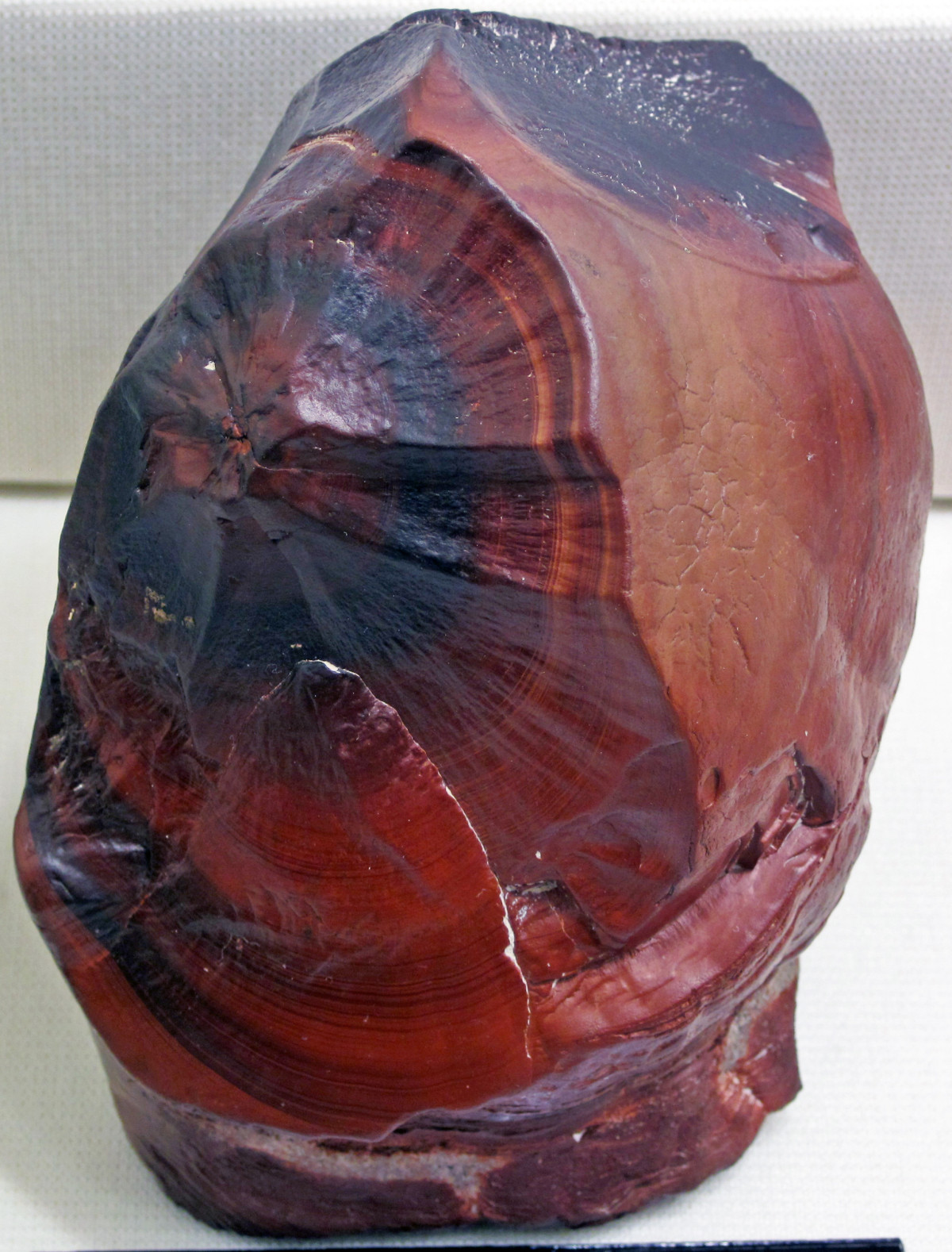 Mfonini no fi: James St. John | Flickr a wɔde kyerɛw nsɛm
Mfonini no fi: James St. John | Flickr a wɔde kyerɛw nsɛm
Cassiterite Ahorow Ahorow
Te sɛ ne din a wɔde frɛ no ne sɛnea wɔde di dwuma wɔ mfiridwuma mu no, wɔde cassiterite ahorow pii bata tin ho. Nokwarem no, ne ahorow no mu biako pɛ na enni “tin” wɔ ne din mu. Momma yɛnhwɛ type biara a ɛwɔ aseɛ ha.
Nnua Tin
Nnua tin yɛ cassiterite ahorow a ɛyɛ microcrystalline (anaasɛ cryptocrystalline). Sɛ wunim chalcedony ne quartz yiye a, nnua tin yɛ chalcedony sɛnea cassiterite yɛ quartz no.
Saa ahorow yi wɔ nkaa a ɛyɛ nhama a ɛwɔ kɔla ahorow a ɛwɔ ntam a ɛte sɛ nkaa a wuhu wɔ dua dua mu no.
Mmɔre Tin
Dough tin yɛ fitaa bi a efi Cornwall, England, a ɛte sɛ paanoo mmɔre a wɔannoa wɔ ne nwene ne kɔla mu, enti wɔtoo din no.
Toad Aniwa Tin
Toad aniwa tin no kɔla ne ne nwene te sɛ mmɔre tin, nanso ɛda nsow esiane ne botryoidal a ɛte sɛ bobe anaasɛ reniform su a ɛte sɛ asaabo nti. Ɛsan nso wɔ nhama a ɛhyerɛn ne kɔla-banding, na ɛma ɛte sɛ ɔkraman aniwa kakra.
Asuten Tin
Asuten mu tin yɛ kurukuruwa a asubɔnten mu nsu hyɛ ase.
Ainalitefoɔ
Ɔkwan biako pɛ a “tin” nni ne din mu, ainalite yɛ cassiterite bi a ɛyɛ dade tantalum pentoxide (FeTa2O6) bɛyɛ ɔha biara mu nkyem 10. Ne fibea a edi kan ne Finland.
Woayɛ mfitiaseɛ no, enti ɛyɛ berɛ a ɛsɛ sɛ wokɔ cassiterite sɛnkyerɛnnedeɛ ne nea atwam no mu.

Cassiterite Nkyerɛase & Abakɔsɛm
Nea cassiterite kyerɛ no ne nea ɛda adi, nyansa, ne ahobammɔ wɔ abusuabɔ. Ɔbo no nso yɛ ɔsoro hann ho sɛnkyerɛnne, na wɔtoo din “Onyamesom Bo.”
Wɔ tete mmere nyinaa mu no, na tin fibea titiriw ne cassiterite. Ne titiriw no, cassiterite a wotu de yɛ tin no fi Kɔbere Mmere (3,500 kosi 2,300 A.Y.B.) mu. Ná cassterite tin nso ka dade a wɔde afrafra a edi kan no ho.
Ɛdefa ne din ho no, nkyerɛkyerɛmu abien na wɔde ma a egyina onii a wubebisa no so. Biako ne sɛ efi Hela kasa mu kassiteros , a ɛkyerɛ “tin” esiane... ntease ahorow a ɛda adi nti.
Nkyerɛkyerɛmu a ɛto so abien no fi Cassiterides a na ɛwɔ hɔ ansa na Roma reba, nsupɔw a enni beae a wɔpene so (ɛwom sɛ ebia ɛbɛn Spain de).
Wɔ 1400 mfe no mu no, wɔn a wotu fam no fii ase yii cassiterite fii nneɛma a wɔde asie wɔ Bohemia (Czechia) ne Saxony (Germany) mu. Tumi a wotu no kɔɔ soro sen biara wɔ mmeae yi wɔ 1600 mfe no mu.
Germanni nnuruyɛfo Martin Heinrich Klaproth tintim cassiterite ho nkyerɛkyerɛmu a edi kan wɔ 1797 mu. Eduu 1700 ne 1800 mfe no mu no, Cornwall a ɛwɔ England no bɛyɛɛ beae foforo a ɛhɔ yɛ hyew a wɔyɛ cassiterite.
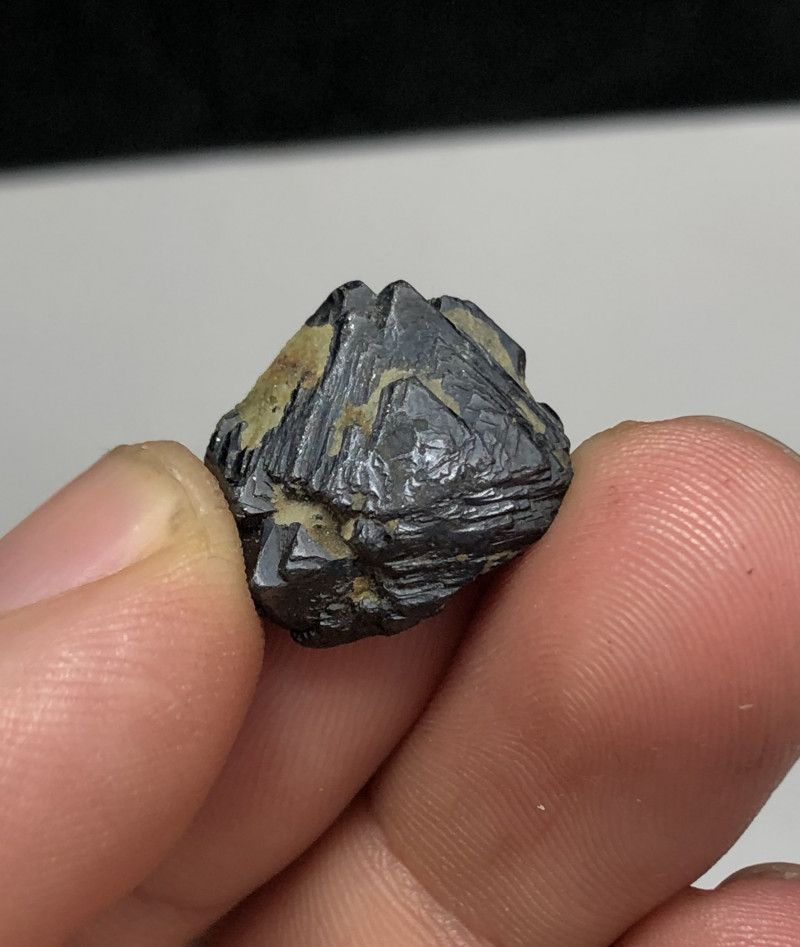
Cassiterite Ayaresa Nneɛma
Te sɛ aboɔden abo afoforo no, kɔla a cassiterite wɔ no nya tumi a ɛwɔ sɛ ɔbo a ɛsa yare so nkɛntɛnso . Saa ahwehwɛ yi mu dodow no ara yɛ tuntum, na ɛka aboɔden abo tuntum afoforo ho ma ɛde fam ne kari pɛ ma.
Brown cassiterite, te sɛ aboɔden abo afoforo a ɛyɛ bruu , bue ntini chakra no ma ɛde ahobammɔ ne ahoɔden ba. Cassiterite kɔkɔɔ anaa ahabammono nso yɛ chakra ɔbo a wɔde hyɛ sacral ne koma chakra no pɛpɛɛpɛ, na ɛma wo nkate ne w’akɔnnɔ hyia.
Momma yɛnhwɛ nipadua ne nkate fam ayaresa mu mfaso pɔtee a ɛwɔ cassiterite so.
Nipadua mu Ayaresa
Wɔkyerɛ sɛ wɔ nipadua mu no, cassiterite sa koma ne ahurututu, na ɛhyɛ ahomegye mu den ma nnipa a wɔrepere ɔhaw ahorow te sɛ ayamtu. Wogye di nso sɛ ɛkanyan amemene no na ɛma obi kae ade yiye.
Nkate mu Ayaresa
Wɔ nkate fam no, cassiterite ahwehwɛ betumi aboa wo ma woada wo botae ahorow adi na woadi ɔhaw ahorow ho dwuma wɔ kwan so. Ɛyɛ papa titiriw ma nhwehwɛmu anaa akontaabu nsusuwii.
Bio nso, ahwehwɛ ayaresafo de saa ɔbo yi di dwuma de ma anidaso, fam, ne ahoɔden a wɔde gyina ano no yɛ kɛse. Wɔ obiara a ne ho retɔ no afi ɛyaw a ɛne sɛ wɔpow no anaasɛ wogyaw no mu fam no, cassiterite betumi aboa wo ma woanya mfiase foforo a ɛyɛ anigye.

Cassiterite Aboɔden Aboɔ Nneɛma a Ɛwɔ Hɔ
Abenfo hu mfaso a ɛwɔ cassiterite so denam baabi a ɛhwe ase wɔ kɔla, nea wɔatwa, nea emu da hɔ, ne ne mu duru a ɛyɛ carat so a wɔhwɛ so. Wobetumi nso ahwehwɛ mu sɛ ebia nkɔso biara wɔ hɔ anaa.
Ahosuo
Cassiterites a ɛwɔ kɔla a emu yɛ den no som bo kɛse, ɛnyɛ sɛ ɛyɛ fɛ nko nti, na mmom esiane sɛ ɛma aboɔden abo no hyerɛn ne hyerɛn a ɛkorɔn no da adi nti. Pleochroism mpo ye sen biara wɔ aboɔden abo a ɛwɔ kɔla a ano yɛ den mu.
Kɔla ahorow a wɔtaa de di dwuma ne bruu ne tuntum anaasɛ bruu-tuntum. Nea ɛyɛ nwonwa no, cassiterite yɛ allochromatic, a ɛkyerɛ sɛ ne su a ɛho tew sen biara no nni kɔla. Brown ne tuntum no fi dade efĩ mu.
Cassiterite kɔla ahorow a ɛntaa nsi ne bobesa kɔkɔɔ, kɔkɔɔ-biribiri, kɔkɔɔ-biribiri, ne kɔkɔɔ. Nea ɛnte sɛ abo pii no, mpɛn pii no, nhwɛsode a ne kɔla yɛ bruu no som bo sen nea ɛyɛ tuntum.
Twa
Sɛ wotwa afã horow a ɛfata a, ebetumi ama cassiterite ahyerɛn na ahyerɛn asen diamond. Nneɛma a wɔtaa twitwa a ɛwɔ afã horow ne emerald, oval, cushion, ne kurukuruwa.
Wɔtaa twitwa nnua tin cassiterite sɛ cabochons , freeform nsusuwii, anaasɛ adwini. Banding no ma saa decor asinasin akɛse yi.
Bio nso, wobetumi atɔn cassiterite a ɛwɔ ahwehwɛ su a ɛyɛ fɛ no a ɛnyɛ den (wɔntwitwaa).
Ɛda adi pefee
Cassiterite rough dodow no ara kura nneɛma a wɔde ka ho .
Mpɛn pii no, wubehu nkatanim (ahwehwɛ no mu mpaapaemu a wɔasa a ɛte sɛ nsateaa nkyerɛwee a wɔde aka ho) anaasɛ nkatanim a ɛwɔ afã abien (ahwehwɛ no mu ntokuru a nsu ne nsu a ɛyɛ hyew ahyɛ mu ma). Ɛtɔ mmere bi a, Bolivia cassiterite wɔ tourmaline a ɛte sɛ ade a wɔde ka ho.
Ɛwom sɛ ɛntaa nsi de, nanso cassiterites a enni nneɛma a wotumi hu wɔ aniwa a ɛda hɔ (a wɔfrɛ no aniwa a ɛho tew) no som bo sen biara.
Carat Mu duru
Ɛkame ayɛ sɛ bere nyinaa na cassiterite aboɔden abo a ɛho tew aniwa no mu duru nnu carat 1. Cabochons a wɔde nneɛma akɛse abɔ no betumi ayɛ akɛse.
Bolivia ayɛ cassiterite nneɛma a ɛyɛ bruu a ɛyɛ hann kosi tuntum a ɛma wonya aboɔden abo a ne kɛse yɛ carat 15 a emu da hɔ yiye ne aboɔden abo a ne kɛse yɛ carat 25 a emu da hɔ saa. Wɔhwehwɛ cassiterite aboɔden abo a enni kɔla a emu duru boro carat 2 kɛse.
Ayaresa & Nneɛma a Wɔde Yɛ Nneɛma
Ɛwom sɛ mpɛn pii no wɔmfa nnuru nni dwuma de, nanso “nsoromma cassiterite” nhwɛsode ahorow bi a Gemological Institute of America (GIA) yɛɛ ho nhwehwɛmu wɔ 2001 mu no daa aduru a wɔde nsa ayɛ adi. Ná wɔde nsensanee a ɛte sɛ nhama a ɛne ne ho di nsɛ a ɛma nsoromma mu hwɛ no na ɛtwetwe saa abo yi.
Esiane sɛ nsoromma mu hwɛ yɛ su a ɛsom bo nti, hwɛ yiye wɔ “nsoromma cassiterite” nhwɛsode ahorow a wɔtɔn ho, efisɛ ɔbo no nkyerɛ saa aniwa mu adeyɛ yi fi awosu mu .
Nyansahufo ayɛ cassiterite a wɔde nneɛma ayɛ. Wɔabɔ no kɛse de ayɛ nhwehwɛmu, nanso ebia ɛrenkyɛ na eyinom apue wɔ aboɔden abo gua so.
Sɛ yɛsan kɔ asɛm ankasa no so a, ɔkwan bɛn so na abɔde mu cassiterite yɛ?
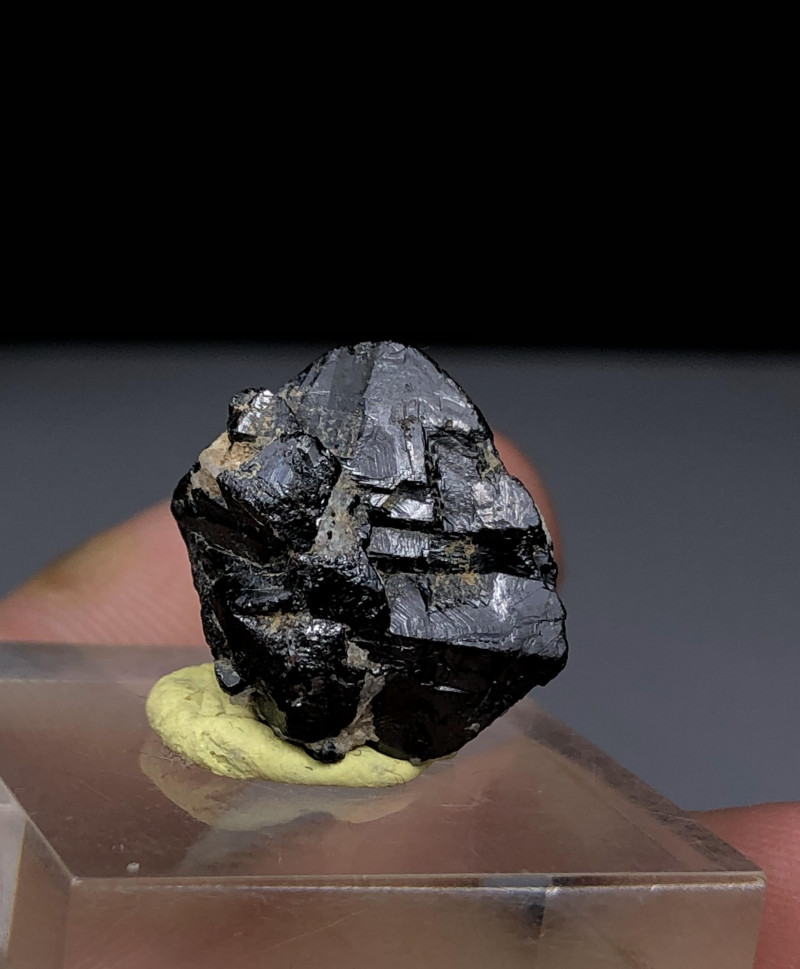
Cassiterite a Wɔyɛ & Nneɛma a Wɔde Yɛ Adwuma
Mpɛn pii no, cassiterite ba bere a nsu a ɛde nneɛma a apete kɔ so kɔ abotan ntini mu na ɛyɛ nwini, na ɛma nneɛma no yɛ ahwehwɛ no.
Cassiterite dodow no ara ba granite, rhyolite , ne pegmatite ntini mu. Wohu no nso wɔ alluvial placer deposits, baabi a nsu de minerals kɔ beae foforo (a ɛtaa ba ma asubɔnten tin ahorow no).
Mmeae a Wɔtu Tuo
Ɛhe na wohu cassiterite wɔ wiase? Ɛnnɛ, cassiterite a ɛyɛ aboɔden abo dodow no ara fi Bolivia, na Russia ne China di akyi. Nneɛma atitiriw afoforo a wonya fi mu ne Burma, Nigeria, Indonesia, Thailand, ne Malaysia.
Cassiterite fibea nketewa no bi ne:
Australia
Canada
Czechia na ɛwɔ hɔ
Japan
Mexico
Pakistan
Portugal
Spain
Sri Lanka na ɛwɔ hɔ
Tasmania na ɛwɔ hɔ
UK (England) .
U.S.A. (Alaska, California, Nevada, Carolina Kesee Fam, Dakota Kesee Fam, Virginia, Washington)
Vietnam
Woresusuw ho sɛ wobɛhwehwɛ cassiterite bi a wɔtɔn? Afei momma yensusuw nea yɛbɛhwɛ kwan wɔ bo ho.
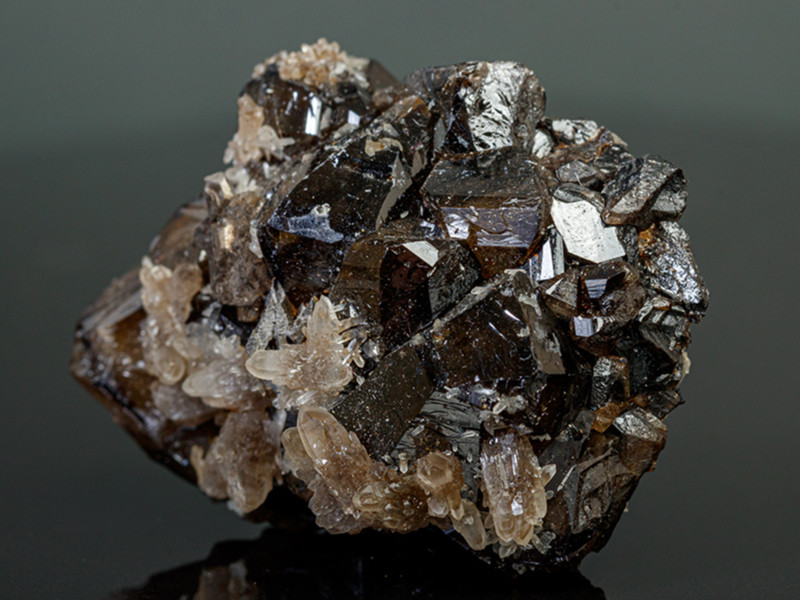
Cassiterite Bo & Ne Bo
Cassiterite minerals a wɔde yi tin ne facetable rough ma aboɔden abo no bo yɛ soronko koraa. Kan no dɔɔso kɛse na mpɛn pii no wɔde sika akɛse na ɛbɔ ho ka. Cassiterite bo a wɔbɔ wɔ kg biara ho ma ore nneɛma (ɛno nyɛ gem-quality) bɛyɛ $3-$5 kilogram biara.
Sɛ wɔtɔn no kɛse a, faceted cassiterite yɛ bɛyɛ dɔla 80 wɔ carat biara mu. Ahwehwɛ tuntum a ɛyɛ den no bo yɛ den kɛse, na wogye fi $0.10-$0.50 wɔ carat biara mu. Nanso, wobetumi atɔn ahwehwɛ a wɔannoa a ɛhyerɛn na wɔntaa nhu no dɔla 85 kosi 400.
Opaque tumbled cassiterite taa yɛ bɛyɛ $3-$5.
Cassiterite Hwɛ ne Nsiesiei
Nea eye ne sɛ, cassiterite yɛ aboɔden abo a ɛyɛ den na ɛtra hɔ kyɛ, na ɛma ɛyɛ kɛse ma da biara da hyɛ. Nanso, yɛkamfo nhyehyɛe ahorow a ɛbɔ ho ban ma nneɛma a ɛyɛ mmerɛw kɛse te sɛ nkapo anaa nkaa a wɔde siw nwene ano kyerɛ.
Cassiterite a ɛtra hɔ kyɛ nso ma aboɔden abo hwɛ yɛ tẽẽ yiye. Ɔkwan a ahobammɔ wom sen biara a wɔfa so tew ne ho ne nsu a ɛyɛ hyew, samina a emu nyɛ den, ne brɔs a ɛyɛ mmerɛw.
Fa Cassiterite yɛ nnommum!
Bere a nea ɛho hia kɛse wɔ cassiterite mu ne tin a ɛwɔ mu no, mfaso wɔ so saa ara wɔ aboɔden abo a ɛwɔ mu no so wɔ sɛnea ɛma wo honhom so na ɛma wokɔ so tra fam no mu. Snag cassiterite agude bi na akyinnye biara nni ho sɛ wobɛfa obiara a ɔretwam no dommum!
搜尋Gemstone Encyclopedia
相關拍賣
相關文章
Momma yɛnkyerɛkyerɛ sɛnea wɔtɔ aboɔden abo wɔ intanɛt so. Yɛwɔ aboɔden aboɔ a ɛso sen biara wɔ intanɛt so na ɛbɛtumi ayɛ den kakra wɔ mfitiaseɛ no. Ma yɛmfa afotu bi a mfaso wɔ so mmoa wo.
3rd Oct 2018
W’aboɔden abo a wobɛhwɛ so no boa ma ɛyɛ fɛ wɔ wo nkwa nna nyinaa mu. Yɛbɛka nneɛma te sɛ denden ne ayaresa ho asɛm, ne anammɔn a ɛfa sɛnea wobɛhohoro wo aboɔden abo na wode asie dwoodwoo ho.
9th May 2018
So woasusuw sɛnea wɔyɛ Ruby aboɔden abo ho pɛn? Ayaresa ahorow pii wɔ gua so na yɛbɛboa ma yɛakyerɛkyerɛ mu
9th May 2018
最新的文章
Palm ivory carvings, also called vegetable ivory, are a natural alternative to elephant ivory, harvested ethically from the palm nut of South American phytelephas palm. Learn all about palm ivory in this guide!
15th Jan 2026
Chrysanthemum nhwiren abo yɛ abɔde mu anwonwade a ɛwɔ calcite, celestite, anaa andalusite nhwiren fitaa bi a wɔde asisi limestone tuntum anaa atɛkyɛ abo so.
13th Jan 2026
Rainbow lattice sunstone yɛ feldspar ahorow a ɛwɔ optical nsunsuanso abiɛsa fɛfɛ a efi nneɛma ahorow a wɔde ka ho a ɛwɔ hɔ no mu ba. Ɛyɛ ogya kɔla display ne lattice nsusuwso ma ɛyɛ coletor abohene a wɔntaa nhu!
12th Jan 2026
文章類別
How To's is where you will find helpful articles from gem Rock Auctions on how to cut gemstones, select gemstones and buy gemstones.
9文章






